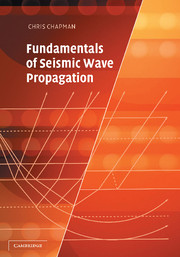Book contents
- Frontmatter
- Contents
- Preface
- Preliminaries
- 1 Introduction
- 2 Basic wave propagation
- 3 Transforms
- 4 Review of continuum mechanics and elastic waves
- 5 Asymptotic ray theory
- 6 Rays at an interface
- 7 Differential systems for stratified media
- 8 Inverse transforms for stratified media
- 9 Canonical signals
- 10 Generalizations of ray theory
- Appendices
- Bibliography
- Author index
- Subject index
Preliminaries
Published online by Cambridge University Press: 19 January 2010
- Frontmatter
- Contents
- Preface
- Preliminaries
- 1 Introduction
- 2 Basic wave propagation
- 3 Transforms
- 4 Review of continuum mechanics and elastic waves
- 5 Asymptotic ray theory
- 6 Rays at an interface
- 7 Differential systems for stratified media
- 8 Inverse transforms for stratified media
- 9 Canonical signals
- 10 Generalizations of ray theory
- Appendices
- Bibliography
- Author index
- Subject index
Summary
Unfortunately, the nomenclature, symbols and terms used in theoretical seismology have not been standardized in the literature, as they have in some other subjects. It would be a vain hope to rectify this situation now, but at least we can attempt to use consistent conventions, adequate for the task, throughout this book. While it would be nice to use the most sophisticated notation to allow for complete generality, rigour and developments in the future, one has to be a realist. Most seismologists have to use and understand the results of theoretical seismology, without being mathematicians. Thus the phrase adequate or fit for the task is adhered to. Unfortunately, some mathematicians will find the methods and notation naive, and some seismologists will still not be able to follow the mathematics, but hopefully the middle ground of an audience of typical seismologists and physical scientists will find this book useful and at an appropriate level.
Nomenclature
Homogeneous and inhomogeneous
The words homogeneous and inhomogeneous are used with various meanings in physics and mathematics. They are overused in wave propagation with at least four meanings: inhomogeneous medium indicating a medium where the physical parameters, e.g. density, vary with position; inhomogeneous wave when the amplitude varies on a wavefront; inhomogeneous differential equation for an equation with a source term independent of the field variable; and, homogeneous boundary conditions where either displacement or traction is zero.
Information
- Type
- Chapter
- Information
- Fundamentals of Seismic Wave Propagation , pp. xi - xxivPublisher: Cambridge University PressPrint publication year: 2004
